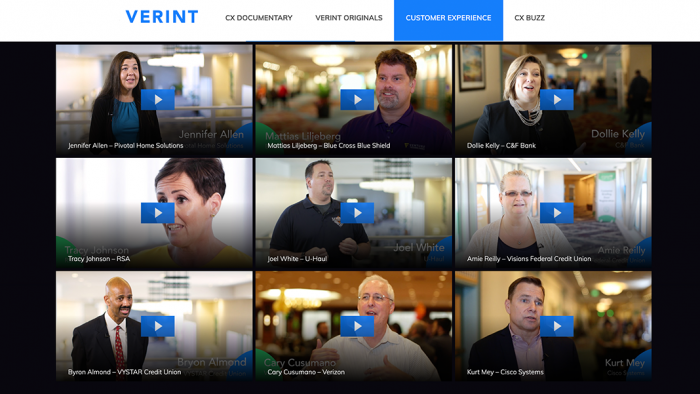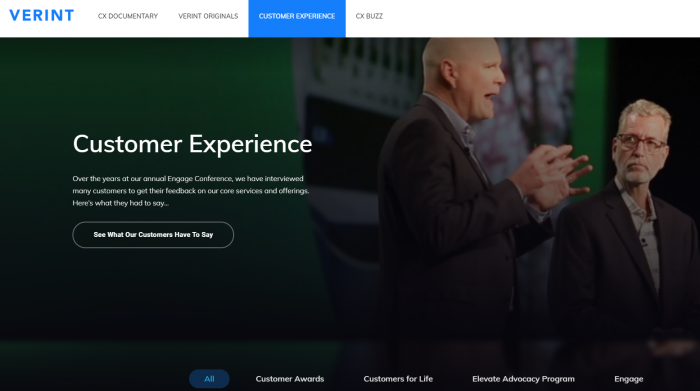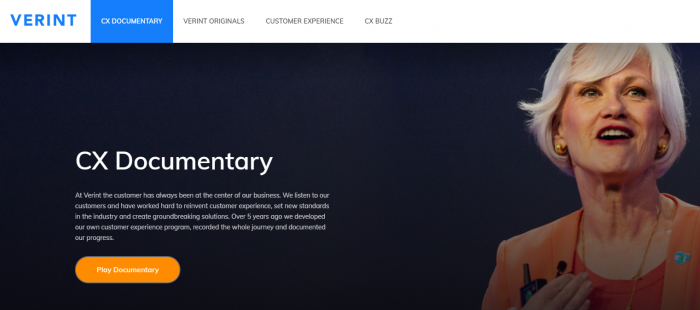
For many companies, customer experience (CX) is like the man behind the curtain in The Wizard of Oz. No matter how hard-working the CX program, sometimes it’s not talked about very much—at least not outside the company and the customer base. Traditionally, CX is thought of as something seamless, invisible, the secret behind the perfectly tuned engine instead of the car’s flashy exterior.
Additionally, many CX professionals build their practice by initiating and supporting change while giving credit to other departments. After success with this approach, it seems counterintuitive to create a site that brings attention to the CX program. Some organizations prefer to keep the program in the shadows, operating successfully but not drawing any outside attention to it.
At the B2B company for which I work, we’re taking a different approach.
Earlier this year, we launched a CX microsite that links off the main page of our company website, the idea being that now visitors—prospects, the media, the analyst community and other customers—can get the full story of our CX program without having to dig around for it.
We’re no longer behind the curtain. We’re right out there as a major part of our company’s mission and philosophy, as a key player in the success we’ve helped our customers achieve. The site tells the story of the five-year-journey to build our CX program, what it’s done for our customers and what it’s done for us in establishing our brand as “The Customer Engagement Company.” Most importantly, it illustrates the company’s commitment to the customer experience.

Why did we do it? Customers were telling us that our CX program is a competitive differentiator and that we weren’t talking about it enough. New customers told us that they were pleasantly surprised to learn that we had a mature CX program. They were impressed that we actively sought their feedback and acted on it to make CX improvements. Other outside influencers—analysts and media—told us that we were the best-kept secret in the company!
If you’re considering a similar initiative for your company—or if you’ve suggested one and been told by the powers-that-be that it’s too great an investment right now—here are some tips to help you overcome the obstacles and achieve success.
1. Start with substance.
We have an extensive Customers4Life program that applies our customer engagement mission and philosophy internally to improve the journey our customers take with our company. The program starts with our executive team and extends across every department in our organization— from sales, service and support to IT development, our back office and even our legal team.
A CX Catalyst network includes our frontline employees—managers and other formal or informal leaders with a passion for the customer. Each CX Catalyst contributes 20-25% of his or her time to CX activities. In annual performance reviews, each is held accountable for those activities. My point is that our company pays more than lip service to CX. It’s an essential part of our mission and vision. It involves everyone from the C-suite on down.
I’m not sure we would have been ready to launch a microsite any sooner than this year. With five years of momentum and proven success under our belt, it was time to develop a site that reflects the maturity of our program, the hard work we’ve invested and the results we see in our customers’ success.
2. Let customers tell your story.
“Our customers are partners in our enterprise. Their feedback shapes the company and their loyalty inspires us to create, innovate and evolve.” We featured these lines in a 16-minute video documentary about our CX program—a documentary that is front and center on the home page of our CX microsite.
The documentary recounts the journey of our CX program over the past five years. It makes these major points.
- How we started our initiative to build a world-class CX program
- How we based our program on talking with customers and sharing their insights across the organization
- How our meticulously crafted journey map helps chart our CX future and prioritize improvements
- How our awards program showcases unique ways our customers are getting value from our solutions
- How our CX program grows by always being in competition with ourselves to innovate constantly with the customer in mind
While company executives discuss the main points in the documentary, our customers also help tell the story. When we started interviewing them on video at Engage, our annual user conference, we put them against a green screen and asked them questions in a journalistic-style format. Today, we’re more informal. We ask them just to tell their story. The style is more personal, more authentic. As a result, their passion comes through in a way that the previous format didn’t allow.

3. Create your own video vault.
We were fortunate that we had lots of video footage from customer testimonial videos and our annual user conference to build the documentary and highlight the points we wanted to make. Through the years, I thought that perhaps our video work at each conference was overkill. What would we ever do with all that footage? Today, I’m glad we made the investment.
The lesson? Take a look back to see if you might have footage you can repurpose from previous events or conferences. Even if you don’t have an immediate use for the footage, archive it so you can retrieve it quickly when you realize it might be the perfect nugget for telling your own CX story.
We’ve featured many of those videos on our website on various pages, but what a joy it is to have them all in one place on our microsite. Collectively, they tell a more powerful story than when they were sprinkled through our company website.

4. Clearly know your purpose.
When we began considering a CX microsite, we asked ourselves where it would fit with our company website. Why did we need a CX site? Who would be interested in it? How could we make it of value to prospects and existing customers? We knew our existing website was all about the products we offer. We developed the CX microsite to further humanize that story.
To make it of value to existing customers, we developed a section called “Verint Originals,” where customers can apply to tell their story on video so we can share it in future iterations of the site. “We’re hitting the road (when it’s safe again!), listening to customers talk about their success,” the section’s copy reads. “Just let us know of your interest and we’ll let you know when we’ll be in your area.” Other sections feature customers sharing their insights on our Customers4Life program, our customer advocacy program and their experiences at our annual user conference. Most of these interviews are no longer than 30 seconds, but they pack a powerful punch that builds enthusiasm for our products and our company.
5. Demonstrate your expertise.
The microsite includes a section called “CX Buzz” in which we feature various thought leadership pieces we have published on the topics of CX—including some of the articles featured in CustomerThink. Like the customer interviews, the pieces have an impact when they’re presented as a collection. They show the market that we know our stuff.

I’m fortunate in that our entire company is committed to CX. Support for building the microsite at this stage of our CX program was unanimous across the executive team. Other CX practitioners aren’t so lucky. My hope is that our microsite serves as a prototype for other practitioners to show their executive teams what’s possible. I think the online depiction of our CX leadership is beautiful and exciting. I think yours can be, too.



